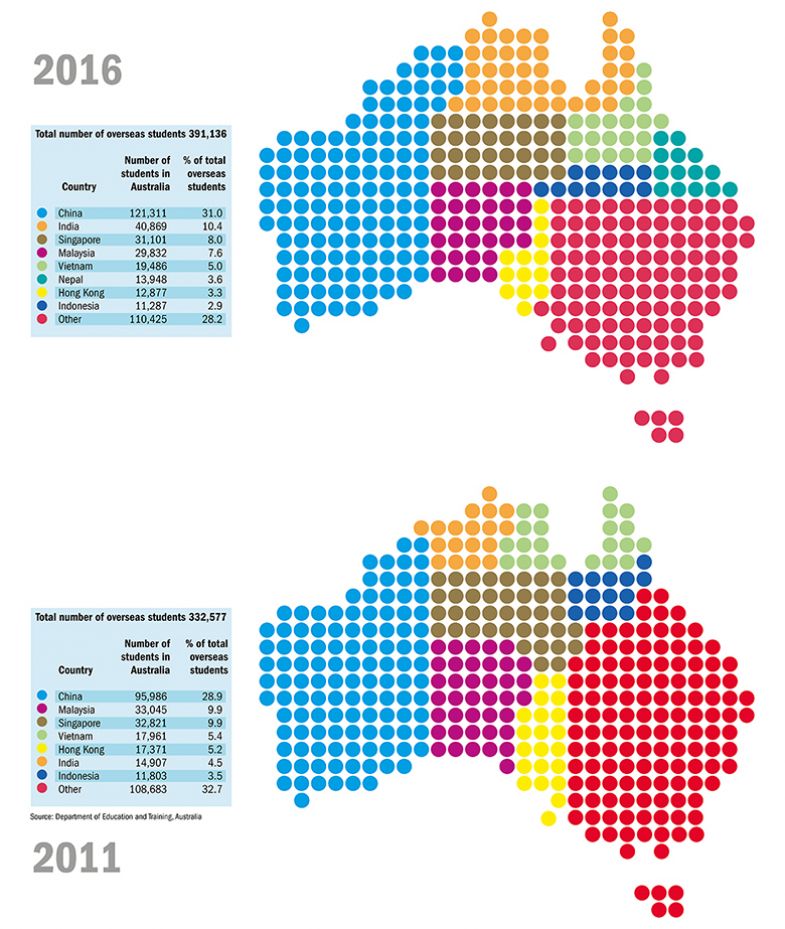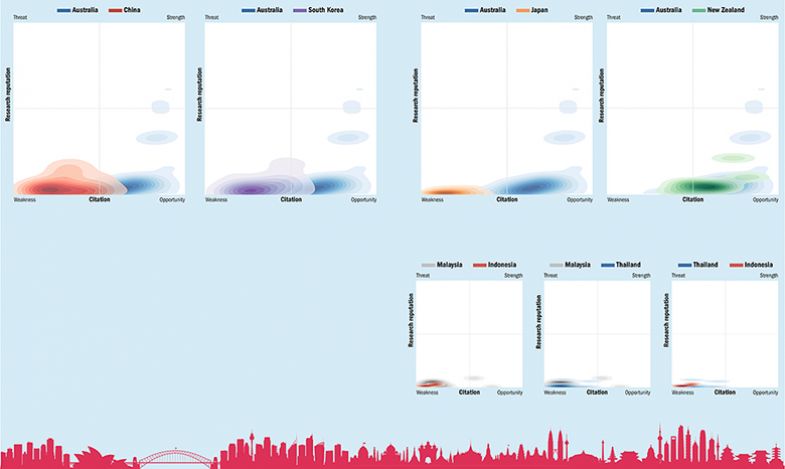Browse the full Times Higher Education Asia-Pacific University Rankings 2018 results
Australia’s strong performance in terms of the research impact of its universities – and how that can build and secure a global reputation – is demonstrated in some of the “Swot” diagrams below.
The graphs show the distribution of universities (represented by the coloured areas) in the Times Higher Education Asia-Pacific University Rankings 2018 according to their citation impact (x axis) and research reputation scores (y axis).
Comparing Australia with other countries well represented in the ranking shows that its institutions are ahead on citation impact and that some are pushing into the upper reaches for reputation scores as well.
Search our database of more than 3,000 global university jobs
New Zealand’s universities are not far behind, while the growing strength of Chinese and South Korean institutions is also clear, with each nation’s bubbles starting to move into the “opportunity” segment of the diagram.
At the same time, the country with the most universities in the Asia-Pacific ranking – Japan – has the most ground to make up on Australia: its bubble is firmly in the “weakness” segment of the graph.
Meanwhile, some other charts show how three emerging research nations in the region – Malaysia, Thailand and Indonesia – fare against each other.
Malaysia, thanks to some high-performing outliers on citation impact, appears to come out on top, while Thailand performs relatively well on this metric for an emerging research nation. However, it is notable that all three are still some way behind other nations on reputation.
(Click on the image to view a larger version)
The make-up of Australia’s overseas student population
The graphics below show how the make-up of Australia’s overseas student population changed between 2011 and 2016 amid a rise of 18 per cent in the total number of international students in the country.
Similar to patterns seen in other developed nations, the increase in those travelling from China was high, up 26 per cent in the period.
But this boosted China’s share of all overseas students in Australia only slightly – from 29 to 31 per cent – because the numbers from India shot up by 174 per cent to just over 40,000.
In this period, it is worth noting, the UK saw its intake from India plummet after changes in government policy, suggesting that Australia may have benefited from this shift.

(Click on the image to view a larger version)
后记
Print headline: Attention getters





